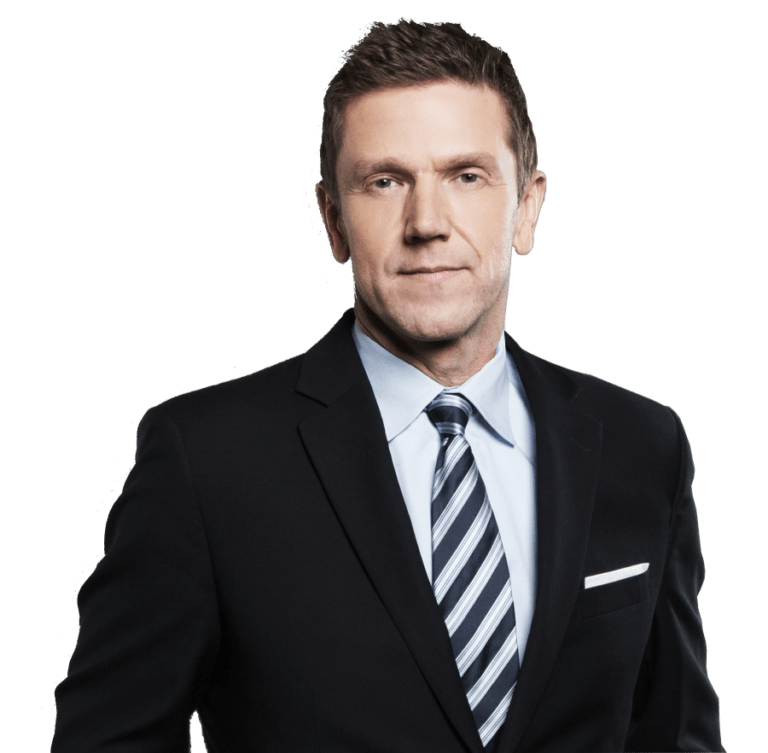
In many ways, high-income executives and self-employed professionals in Canada may be facing a tougher adjustment to retirement finances than those in more traditional careers.
When I refer to the “gap”, I mean the difference between your annual income during your career compared to your annual income during your retirement.
Unionized Professions that Still Offer Guaranteed Pensions Offer Cash Flow Stability
Many Canadians spend 35 years earning $40,000 to $120,000/year as an income in traditionally unionized careers. Often these folks work in environments that offer the last remaining defined-benefit pensions that exist in Canada – government workers, nurses, teachers, and fire and police professionals. All of these careers still offer guaranteed pensions in retirement that may not be much lower than what their income was during their working years, provided they had a long full-time career. For example, a teacher with a $90,000 annual income while working could end up with a guaranteed lifelong pension that is $70,000/year.
This aspect is critical – a teacher or a firefighter can look forward to a rather smooth cash flow stream through their career and into their retirement without much change required to their spending level in retirement. Even better, with income splitting and tax breaks in retirement in Canada, in some cases, their income in retirement will actually be better than during their working years.
High-Income Executives and the Self-Employed Professionals Are All Alone and Facing a Shock
The situation is shaping up to be much different for the dentist who earns $500,000 a year, the doctor who earns $350,000 a year, the lawyer who earns $600,000 a year or the corporate executive who earns $250,000 a year.
While there is no denying all of these people make a lot of money and should be able to take care of themselves, it can be a case of “my eyes are bigger than my stomach” syndrome. With a higher income during the working years comes an almost instant desire for a bigger home, luxury cars, private schools, a cottage, more elaborate vacations and so on.
Of course, this is fine – if you can afford it and you are still paying down your mortgage, saving for your retirement and saving for your kids’ schooling since you are checking all the boxes for proper planning according to traditional thinking. There is nothing wrong with the above scenario of high-income Canadians spending their higher-income on items they value and their financial goals too.
But…
The problem is that the traditional goalposts for retirement savings (RRSP annual limits) and children’s savings (RESP limits) are designed for “normal” people with “normal” incomes and lifestyle expectations. They are intended for incomes below $100,000 year – not three to five to ten times higher! Let me be very specific with two examples:
Children’s Financial Goals

Many doctors, lawyers and dentists will tell you upfront they can see their kids doing a four-year undergraduate university degree and either add a profession on top of that (e.g. med school) or do an MBA or a second degree. It is not uncommon to expect ten years of post-secondary education after high school for each child. That is going to cost a fortune – especially if school occurs outside of Canada or even outside of the city you live in. Saving to the RESP is a joke in this case. If you contribute the standard $2,500/year per child to the RESP and earn 6%/year over 18 years, you may get to $90,000 of savings. This is woefully inadequate for the above situation – it won’t even pay for the undergraduate degree!
High-income professionals need to get real with their savings habits starting at birth – you need to save a heck of a lot more for kids over 20 years than the RESP. If you don’t, then these costs are going to hit you in the face in your 50’s when your kids are university age. So by that age, you should be moving on to save for your retirement which is quickly coming into the foreground!
Ongoing kids’ costs of education into your 60’s are going to continue to be one of the biggest disruptors to retirement plans for Canadians because there is no way anyone should be retiring before being free and clear of kids’ costs.
I’ll repeat it: Saving $2,500 to an RESP is a good start. However, here is the first gap I talked about in my title to this article. The annual RESP amount is not designed for anyone who has costly plans for their kids and will help them pay for it – you need to save a lot more. Contact my team for help sorting all of this out and building a children’s savings plan that reflects your situation. While we are at it, we can also talk about whether you are paying for weddings and kids’ home deposits.
Your Own Retirement

And here is the second gap you may end up as a high-income earner.
Let’s talk about what the experts tell you to do:
Saving the RRSP limit of approximately $26,000/year for 30 years and earning 4% return each year gives you $1,458,000 at the end of 30 years – pre-tax. You sure cannot retire on that small amount as someone who is living off $200,000+ after-tax right now!
Add $6,000/year to your Tax-Free account for another 30 years (this is a new product, and most Canadians won’t yet have a TFSA for 30 years), and that’s another $336,000 more. Combined this totals $1,794,000.
If you are married and your spouse generates another million of retirement savings than all of this money will total $2,794,000 after 30 years. Call it 3 million dollars.
It’s not enough.
If you then retire and live off the 4% return of your asset base for your retirement, you will have $120,000 per year to spend pre-tax without touching your capital.
Alternatively, if you live off 6% of your asset base for your retirement, you will have $180,000 per year to spend pre-tax. Withdrawing $200,000/year while earning 4%, you will deplete your portfolio in 24 years – or age 89 if you retire at 65. This doesn’t even factor in inflation or other one-time expenses.
So here is the gap – compare this retirement income of $120,000 to $180,000 pre-tax to your current impressive cash flow during your working years – perhaps you and your spouse make $200,000 to $600,000 like the professionals I noted above.
Your retirement plan and your blind following of RRSP limits and Tax-Free limits are nowhere close to your current cost of living – the gap will be huge – and you will be forced to work a lot longer to keep your current lifestyle or take a massive hit to your lifestyle by living off far less. You will be miserable.
This “gap” in lifestyle between the working years income for a high-income person and what their retirement is shaping up to be is something I find many professionals don’t even see coming.
See our full video breaking down this topic in more detail here.
Many professionals are so caught up in the moment of maintaining their current lifestyle and their short-term goals that the long-term goals are being woefully under-planned. They are not being ignored – after all, the doctor is making their RRSP contribution each year, and the dentist is making her Tax-Free contribution. The problem is that this level of funding is suitable for a teacher or a firefighter level of income. Doctors, dentists, vets and executives all need to save a lot more.
The Jarring Conclusion for High-Income Professionals
Wake up doctor, lawyer, dentist and high-income executive – or face a shocking retirement reality that will see you working past age 70 to maintain your lifestyle.
The answer is to have an effective financial plan today – one based on your goals and cash flows. Forget about RRSP, TFSA and RESP savings targets set for the average Canadian. Your income is not ordinary, and you need a plan that reflects your financial reality.

Our team specializes in high-income professionals and will build a financial plan for you that reflects who you are – not whom the newspapers say you are. As the financial advisor Toronto locals rely on for 25+ years, you can be sure you’re in good hands. We will set realistic savings targets, debt elimination targets and provide guidelines to growing your net worth, so you don’t have to work to age 70.
Contact my office today. Alternatively, learn more about how we can help you plan on our website.
I am an accountant offering solid math planning for your goals.




